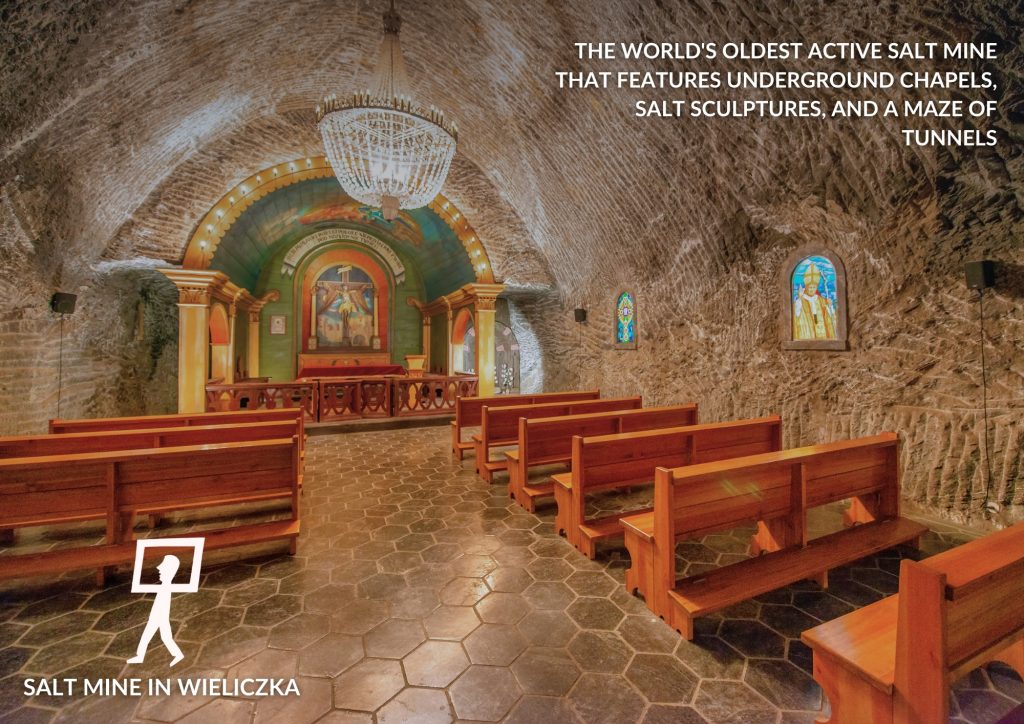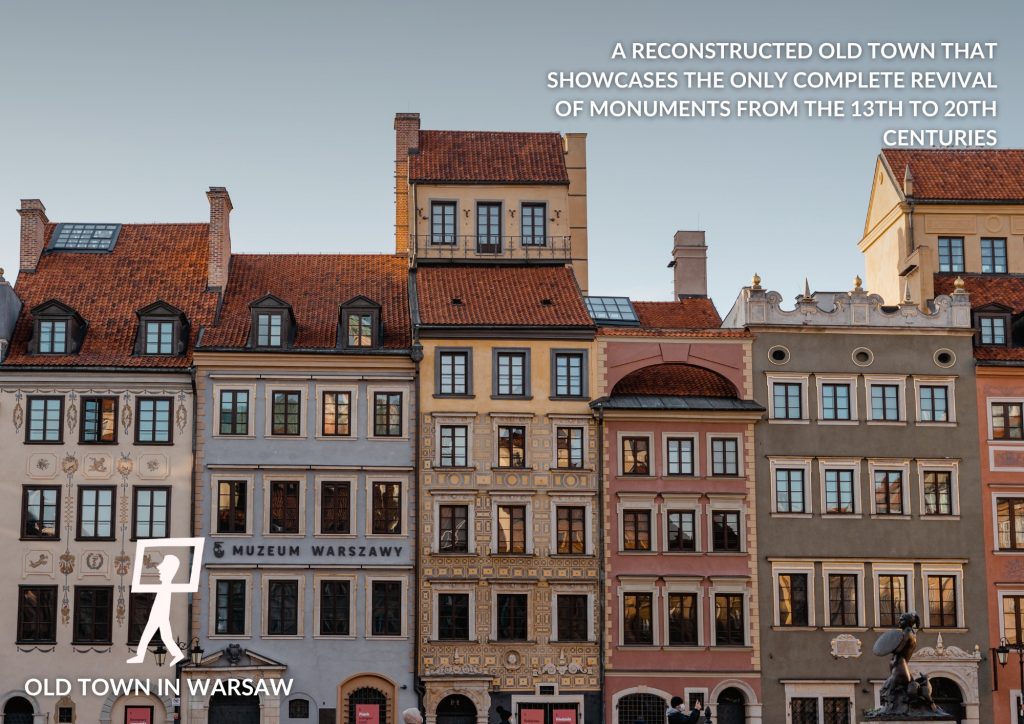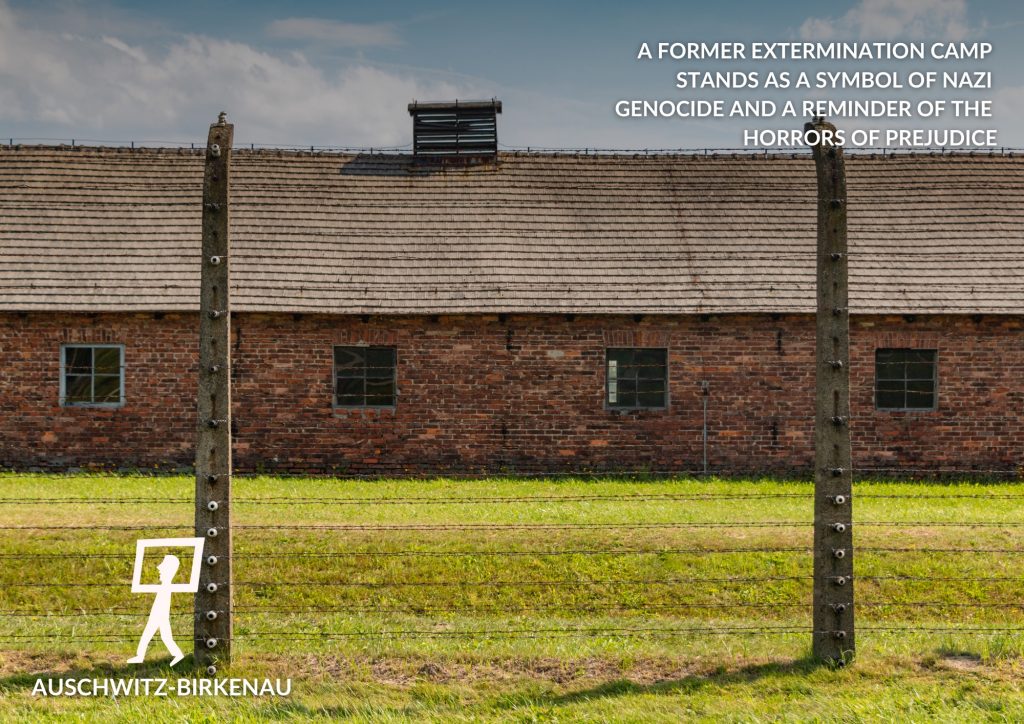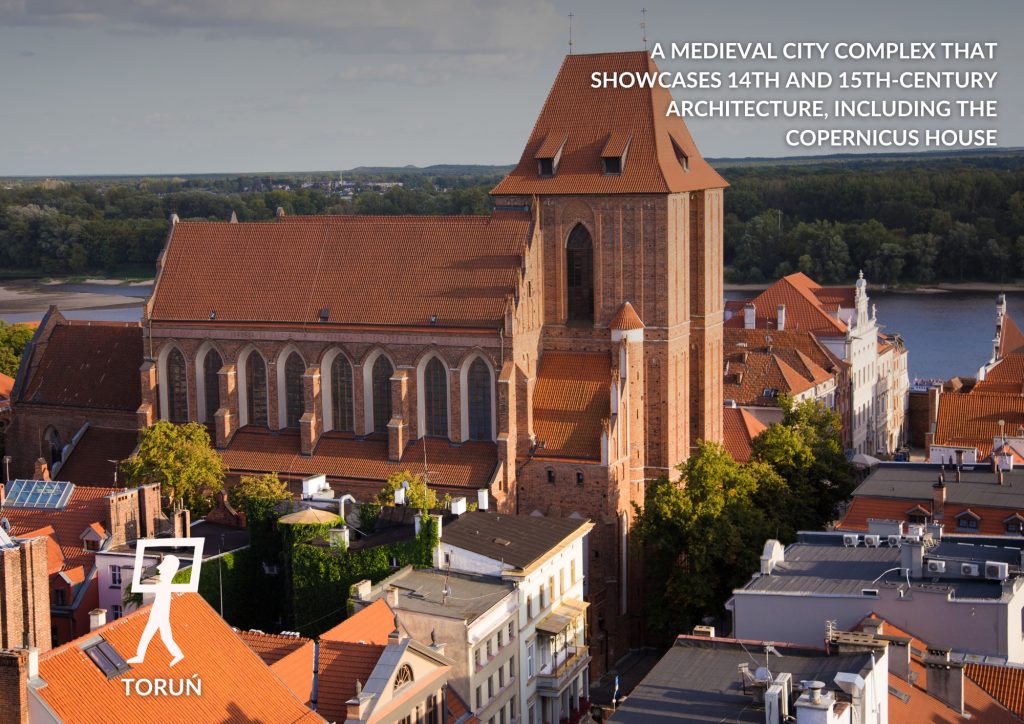More and more Polish cities are joining the UNESCO Creative Cities Network. Krakow, the City of Literature, chairs the UNESCO Creative Cities Steering Committee and acts as a representative of the Cities of Literature on this Committee. Katowice, the City of Music, is the first City of Music from Central and Eastern Europe. Łódź, the City of Film, with the world-famous film school, joined the UNESCO Creative Cities Network in 2017 as the third Polish city.
Poland can also boast 17 objects on the international World Remembrance List. Each of the documents and collections is a separate chapter in the history of Poland.
For example, the Polish fight against communism has been commemorated by the display of the famous 21 Gdańsk Demands written on wooden plywood and exhibited at the National Maritime Museum in Gdańsk. Symbolically, it is the most important document from the August 1980 events that played a huge part not only for regaining freedom in Poland, but also on an international scale: as part of the process of overthrowing communism throughout Central and Eastern Europe.
Other entries include: the manuscript of the most famous work of Nicolaus Copernicus ‘De revolutionibus‘, held by the Jagiellonian Library in Krakow, the unique collections of the manuscripts of Fryderyk Chopin collected in the National Library and the Fryderyk Chopin Institute, and the underground archive of the Warsaw Ghetto (Ringelblum Archive), stored by the Jewish Historical Institute.
Poland has sixteen unique places on the UNESCO World Cultural and Natural Heritage List. The first sites – Kraków and Wieliczka – were included in 1978. The newest site – Krzemionki Prehistoric Striped Flint Mining Region – was included in 2019.
Old Town in Krakow

The Old Town in Krakow was the first heritage site included in the UNESCO World Heritage List. The merchant city from the 13th century has the largest square market in Europe, historic tenement houses, palaces and churches.
The rich past of Krakow is evidenced by the different architectural styles of: the Jagiellonian University, the Royal Castle (renaissance) and the gothic Wawel Cathedral – burial site of the Polish kings, as well as the Jewish district of Kazimierz which, from the Middle Ages to the 19th century, was a separate town. The Main Market Square’s most recognizable landmarks include: the centuries old Sukiennice with dozens of stalls, St. Mary’s Basilica with the altar of Veit Stoss, the Town Hall Tower and the tiny Church of St. Adalbert. In 2013, Kraków’s Main Market Square was chosen the most beautiful square in the world by Lonely Planet guides.
Royal salt mines in Wieliczka and Bochnia

The Wieliczka Mine is the oldest active salt mine in the world. It can be used to trace all stages of mining technology development in individual historical periods. It stretches over 9 levels, has 2040 chambers and 360 km of pavements that form a mysterious maze. Visitors can enjoy lakes, unique altars carved in salt, statues and entire underground chapels with bas-reliefs and chandeliers which take visitors into an amazing, fairy-tale like world. The mine has an underground post office, restaurant, cinema, tennis courts, as well as a sanatorium for people treated for allergies and asthma. It is home to many concerts, theater performances and balls. It also hosts the lowest playground in the world (approx. 125 m) and a hotel.
The salt mine in Bochnia began operating in the 13th century, 40 years earlier than the Wieliczka mine. The excavations of the Bochnia salt mine contain unique chambers with a characteristic geological shape and layout, such as the Ważyn chamber – the largest man-made underground room in Europe, with a healing microclimate. You can admire the chapels carved in rocks. Tourist attractions of the Bochnia Mine include an underground boat crossing, an underground cableway ride, and a 140-meter-long slide that connects the mine’s two levels.
Malbork Teutonic Castle

The Teutonic castle in Malbork was built at the turn of the 13th and 14th centuries and is the most impressive gothic stronghold in Europe. It consists of three castles and covers 20 hectares. From 1309, it was the seat of the Grand Master of the Teutonic Order.
This is a unique work of architecture on a global scale, with innovative technical solutions for those times, especially in terms of methods for the construction of vaults, gables and portals, as well as the use of sculpture and ornaments. The solutions used in Malbork were later used in many castles built by the Teutonic Knights, and in other Gothic constructions found throughout North-Eastern Europe.
Currently, the castle hosts knight tournaments, monumental performances and battle reenactments, with the impressive siege of Malbork deserving special attention.
Wooden churches of southern Lesser Poland – Binarowa, Blizne, Dębno, Haczów, Lipnica Murowana, Sękowa

Wooden churches in the south of the Lesser Poland region represent the traditional way of building medieval Roman Catholic churches. It involves the use of logging technology – horizontal stacking of wooden logs. This technique has been widespread since the Middle Ages in North-Eastern Europe. The churches of Lesser Poland are the oldest cluster of wooden temples in Europe, after the Norwegian Stavkirke. Unique churches, rich in old paintings and sculptures, were funded by the nobility.
The entire Wooden Architecture Trail in Lesser Poland spans a total of 1500 km in length.
Mużakowski Park

This is one of the most extensive historical park projects in Europe, implementing the composition of the English landscape park. It is one of the most outstanding achievements of European gardening craftsmanship. It influenced the development of landscape architecture in Europe and America. Designed as “a picture painted with plants”, it uses the qualities of local vegetation and offers charming walks to its visitors. It stretches on both sides of the Nysa Łużycka, overlapping the Polish-German border. It was founded by the Prussian prince Herman von Puckler-Muskau in 1815-45, with the area of about 1000 hectares, the bulk of which (800 ha) lies in Poland.
Admission to the Polish and German parts of the park is free. The park is available 24 hours a day and can be visited by bicycle.
Old Town in Warsaw

The Old Town in Warsaw is the world’s only example of a planned and complete reconstruction of monuments created between the 13th and 20th centuries. According to a modern conservation theory, all reconstruction is falsification of history. The exception, however, was made for the Old Town, as dictated by moral considerations and the desire of the entire Polish society to revive the ashes of the ruined city. In 1944, during the Warsaw Uprising, over 85% of the Old Town was turned into ruins by German Nazis. The buildings were bombed or blown up. Colorful houses surrounded by defensive walls, churches, palaces, the Market Square and the Royal Castle were completely destroyed. The decision to rebuild Warsaw as the capital of the state was made in January 1945. Over five years, Poles reconstructed the entire Old Town faithfully preserving the original fragments of buildings. This grand reconstruction was carried out based on the preserved historical documentation, including paintings and drawings of Canaletto.
Old Town in Zamość

The city was founded in the 16th century by the Chancellor Jan Zamoyski on a trade route connecting Western and Northern Europe with the Black Sea. It was built in the middle of nowhere, following the Italian models of a perfect city, in accordance with the urban and architectural plan of Bernardo Morando of Padua. The work of the architect was commissioned by Jan Zamoyski in 1580.
Zamość is sometimes called the “pearl of the Renaissance” for several reasons: the city is surrounded by typical Renaissance bastion fortifications, most of the buildings are Renaissance tenement houses, and the cathedral is one of the most outstanding achievements of late Renaissance architecture.
Zamość landmarks include the town hall crowned with the attic, with fan-shaped stairs and the high clock tower, from which a ceremonial bugle call sounds at noon.
Auschwitz-Birkenau. German Nazi concentration and extermination camp in occupied Poland 1940-1945

Auschwitz-Birkenau was the largest extermination camp built by the Germans during World War II. It is a testimony to the genocide committed by the Nazis during World War II. As one watches the fences, barbed wires, watchtowers, barracks, gallows, gas chambers, crematoria, it is hard to imagine that “people brought this fate upon people”, as Polish writer Zofia Nałkowska wrote. The camp was built in German-occupied Poland, initially as a concentration camp for Poles, later also for Soviet prisoners of war, and then also for prisoners of many other nationalities. In the years 1942–1944 it became the main camp for the mass extermination of Jews. Historical research proves that 1.5 million people were killed in this camp.
The Auschwitz-Birkenau Museum was founded in 1947. It is a symbol of man’s capacity for evil and cruelty and a warning sign for the world where prejudice is still alive.
Wooden Orthodox Churches in the Polish and Ukrainian Carpathian region

Orthodox Churches from the turn of the 15th and 16th centuries are the oldest buildings of this type preserved in the region of Polish and Ukrainian Carpathian Mountains. They are also great examples of Lemko and Boyko culture. Sixteen temples have been included on the UNESCO list, eight of which are in Poland. Orthodox churches are one of the greatest achievements of the wooden church architecture of the time, they represent an amazing diversity of forms and types, the craftsmanship of carpentry and stylistic diversity. That is why they stand out amongst the wooden sacral architecture of the rest of Europe.
Białowieża Forest

This is the last remaining part of the ancient forest that once covered all of Europe.
The Białowieża Forest (within Białowieża National Park) was included in the UNESCO list in 1979. In 1992, the protected area was expanded to include a part on the Belarusian side. The “Belovezhskaya Pushcha/Bialowieża Forest” Cross-Border World Heritage Site was created. With the latest decision of the World Heritage Committee in 2014, the protected area was increased to 141 thousand hectares on both sides of the border. The total area, together with the buffer zone, is currently over 308 thousand hectares. The protected area received a new name – the Cross-Border World Heritage Site “Bialowieza Forest”. The Białowieża National Park has the largest European bison population in the world.
Kalwaria Zebrzydowska – the Mannerist architectural and landscape complex with a pilgrimage park

The sanctuary in Kalwaria Zebrzydowska was established at the beginning of the 17th century and was modeled on the Way of the Cross in Jerusalem. The originator of its construction was the voivode of Kraków, Mikołaj Zebrzydowski. The complex includes the baroque basilica with the image of Our Lady of Calvary, a monastery and a complex of baroque and mannerist churches and chapels. All the objects and symbolic places of the Passion and life of the Mother of God are picturesquely integrated into the landscape of Beskid. Tens of thousands of pilgrims visit the sanctuary, especially during the Holy Week before Easter and in mid-August on the Assumption of the Blessed Virgin Mary.
Toruń’s medieval city complex

Toruń was founded by the Teutonic Order in the 13th century. Soon afterwards, as member of the Hanseatic League, the city became an important trade center. The richness of its style is evident in the impressive buildings in the Old and New Towns dating from the 14th and 15th centuries, including the Copernicus House. The layout of the market square and the adjacent tenements has not changed for 700 years. The Leaning Tower, a 15-meter structure built at the turn of the 12th and 14th centuries, remains a big attraction, reminiscent of the leaning tower of Pisa.
Churches of Peace in Jawor and Świdnica

Built in the 17th century in Silesia, the churches are the largest timber-framed sacral buildings in Europe.
The Churches of Peace of Jawor and Świdnica are two of the three remaining Protestant temples built in Silesia under the Peace of Westphalia in 1648. As a result of the Thirty Years War (1618-48), which ended in Silesia with the downfall of Protestantism, all churches were taken away from Protestants. Built of wood and clay and without towers, these churches amaze with the splendor of the interior. The richly decorated galleries – lodges for Protestant nobility – are especially impressive. The church in Świdnica has the capacity of 7.5 thousand people, and the Jawor Chorch of
Hala Stulecia in Wroclaw

Recognized by the American Getty Foundation as one of the 10 most important buildings of modernism in the 20th century, Hala Stulecia (Centenary Hall) is one of the largest monuments in Wroclaw.
It was erected in 1911-1913 by architect Max Berg on the premises of the Centenary Exhibition as a multi-function building for entertainment purposes. It is regarded as a breakthrough structure in the history of architecture for its use of reinforced concrete. Built on a circular plan with four apses, it houses a cylindrical auditorium for approx. 6000 people. The dome is 23 meters high and is topped with a steel and glass lantern.
Tarnowskie Góry Lead-Silver-Zinc Mine and its Underground Water Management System

This is an extraordinary example of a large-scale mine complex consisting of 50 km of drainage tunnels, over 100 km of access tunnels and numerous chambers and shafts covering an area of 38 square km. They are one of the largest and best preserved metal ore mines in the world. They are located on the Silesian plateau in the southern part of Poland, in one of the classic European metallogenic provinces.
Krzemionki Prehistoric Striped Flint Mining Region

This prehistoric mining region in Krzemionki Opatowskie is located on the north-eastern edge of the Świętokrzyskie Mountains. The prehistoric flint mines operated in this place between about 3900 B.C. and 1600 B.C. from the Neolithic to early bronze age. The Krzemionki Complex is one of the largest examples of the prehistoric industrial archaeological heritage known to humanity. Its uniqueness lies in the clear preservation of traces of prehistoric human activity, focused on the extraction and processing of flint over a huge area.
